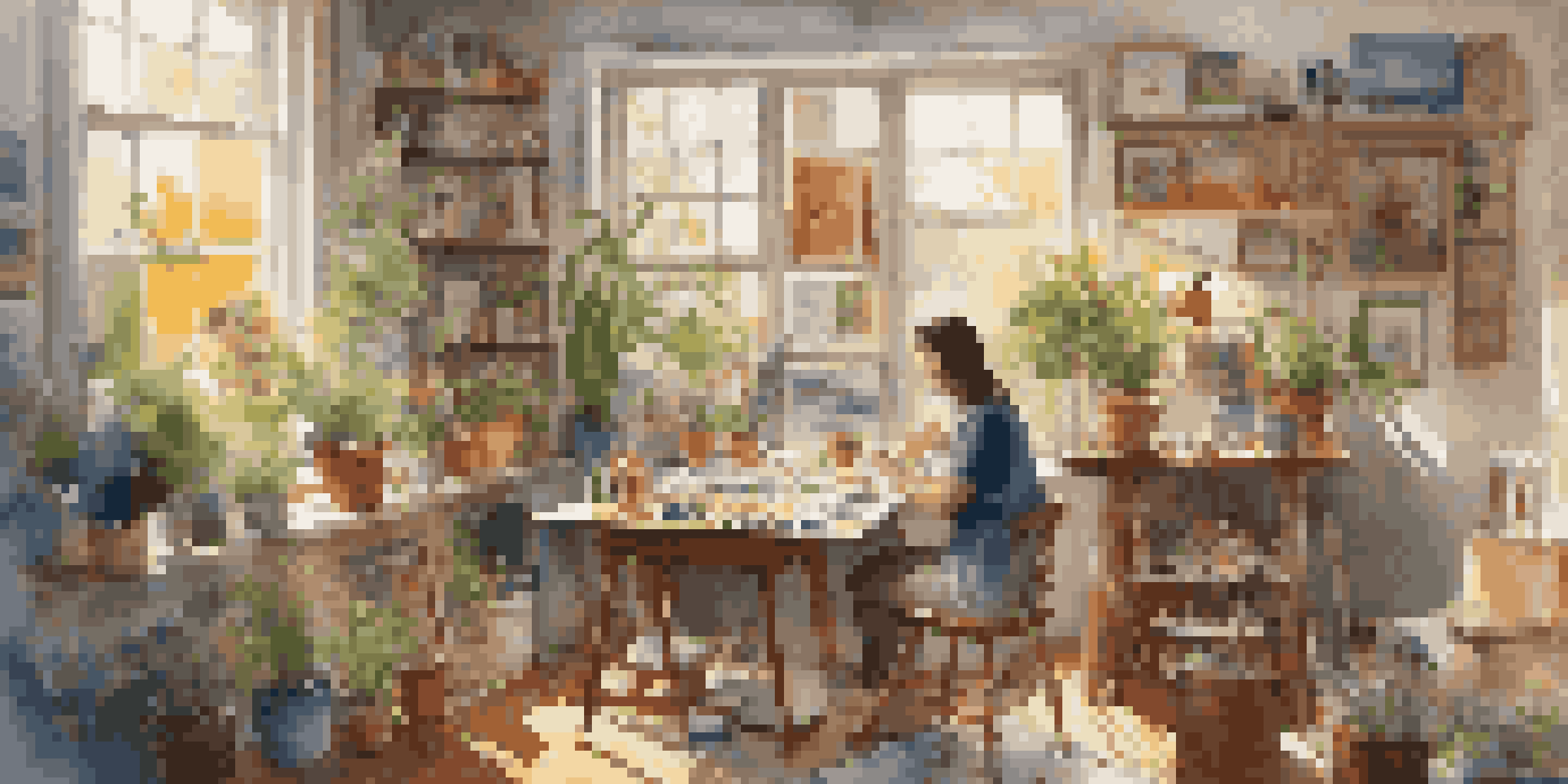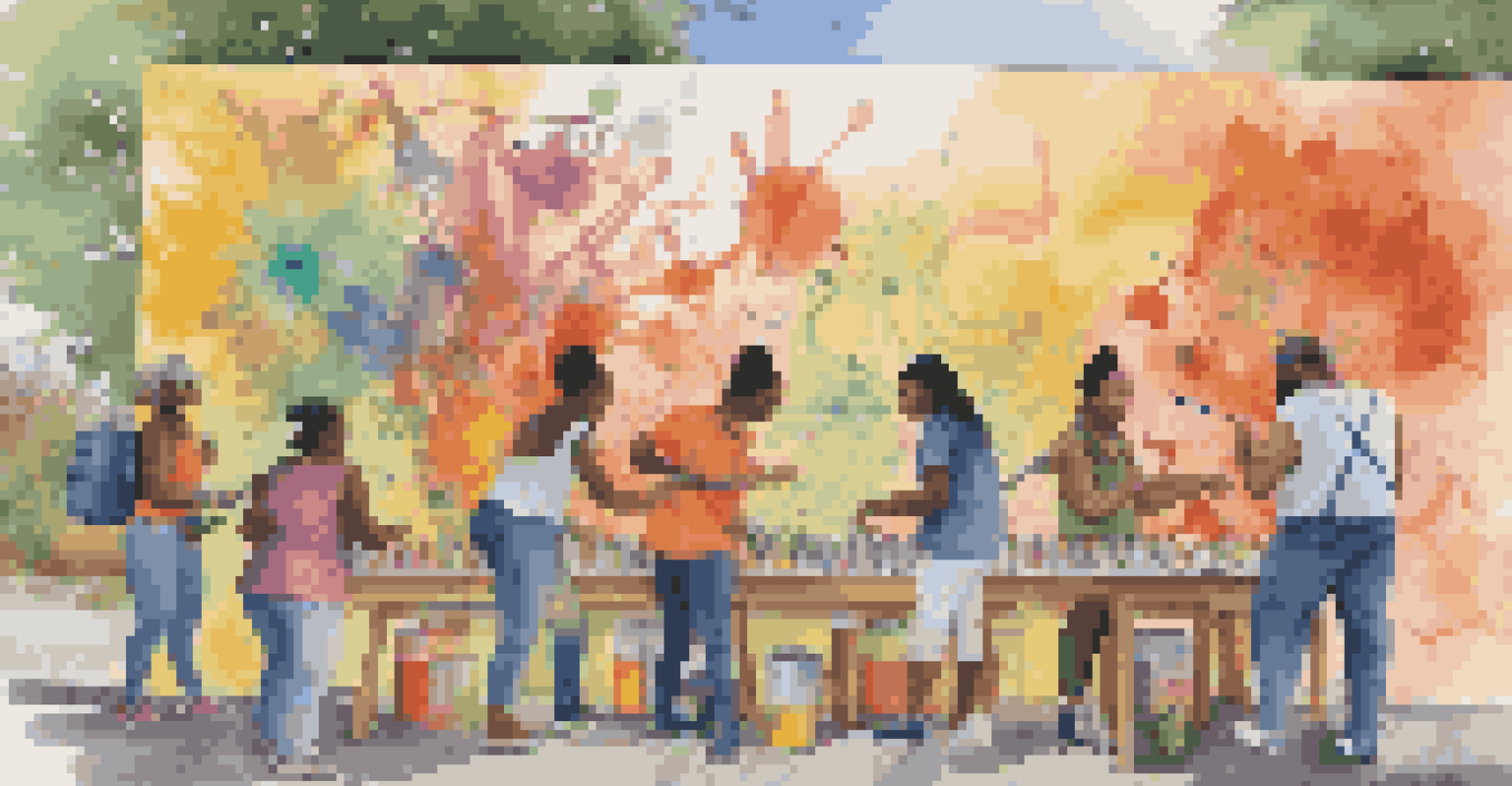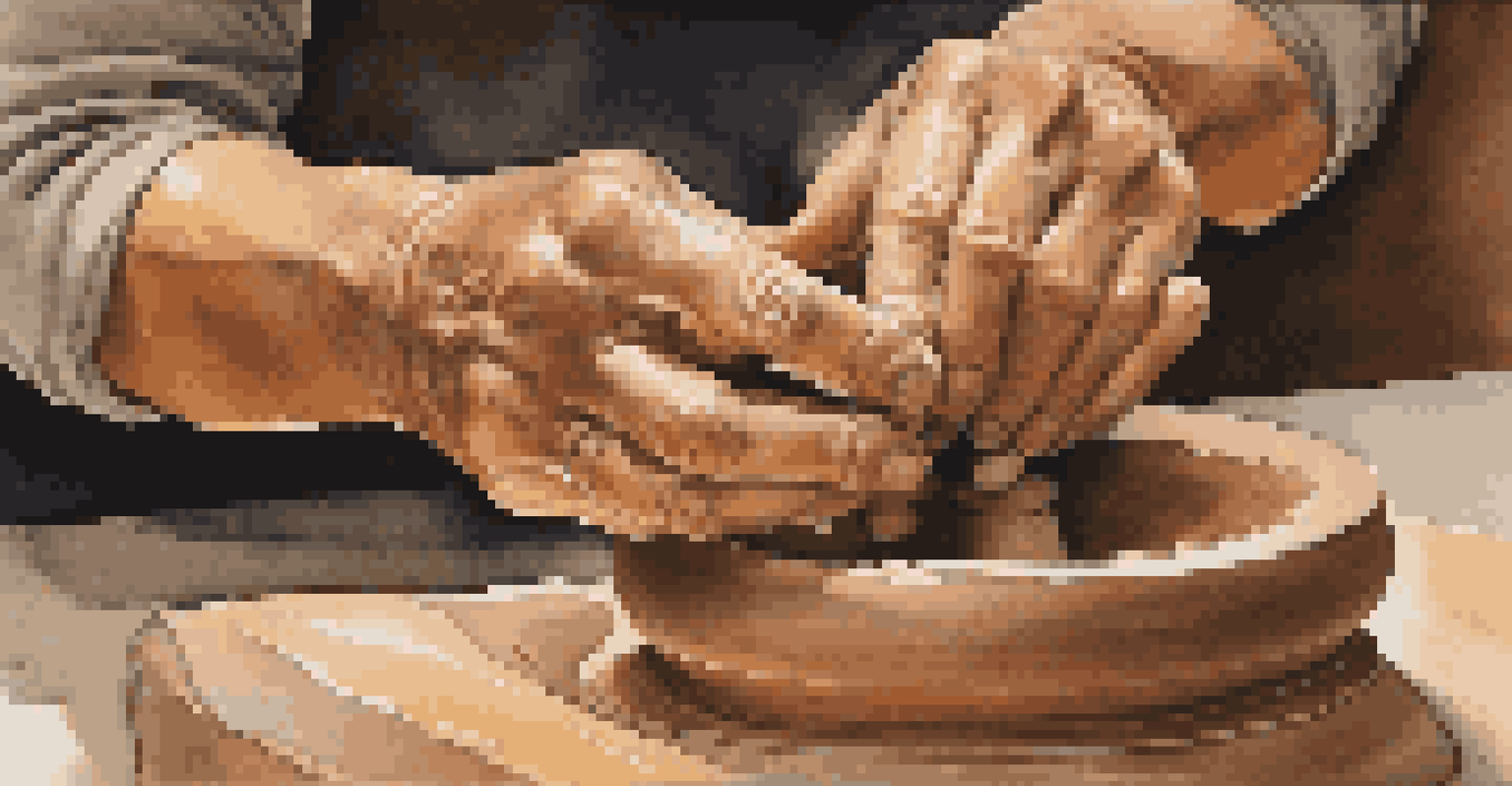The Role of Art Mentorship in Bridging Educational Gaps

Understanding the Concept of Art Mentorship
Art mentorship involves a relationship between a seasoned artist and a mentee, focusing on skill development and personal growth. This dynamic can take many forms, from one-on-one sessions to group workshops. The idea is to create a safe space where emerging artists can explore their creativity while receiving constructive feedback.
Mentorship is not just about sharing knowledge; it’s about creating a safe space for artists to explore their creativity.
Mentorship fosters a unique opportunity for mentees to learn not just technical skills but also the nuances of artistic expression. By sharing their experiences, mentors can help guide their mentees through common challenges faced in the art world, such as self-doubt and creative blocks. This guidance can make a significant difference in a young artist's journey.
Ultimately, art mentorship is about building a supportive community that values growth and collaboration. As mentors pass on their knowledge, they also cultivate a culture of encouragement that can inspire the next generation of artists. This relationship can be a powerful tool in bridging the educational gaps that exist in the arts.
Identifying Educational Gaps in the Arts
Educational gaps in the arts often arise from disparities in access to resources, training, and mentorship opportunities. Many aspiring artists, especially from underrepresented backgrounds, may find themselves lacking the support they need to develop their skills. This can lead to a cycle where talent goes unrecognized and undeveloped.

For instance, students in low-income areas may not have access to quality art programs or experienced instructors. This lack of exposure can hinder their artistic development and limit their career options. By identifying these gaps, we can better understand how crucial mentorship is in leveling the playing field.
Art Mentorship Builds Skills
Art mentorship fosters technical and conceptual skill development by providing personalized guidance and constructive feedback.
Addressing these gaps requires a collective effort from educators, artists, and communities to create inclusive programs. By fostering environments that encourage artistic exploration, we can help bridge the divide and ensure that all aspiring artists have the opportunity to thrive.
The Impact of Art Mentorship on Skill Development
Art mentorship significantly contributes to the technical and conceptual skill development of emerging artists. Through personalized guidance, mentors can tailor their teaching methods to match the unique needs of each mentee. This individualized approach helps artists develop their style while mastering essential techniques.
The greatest gift a mentor can give is the gift of confidence, for it is the foundation upon which creativity is built.
For example, a mentor might introduce their mentee to various art forms, encouraging them to experiment with different mediums. This exploration not only enhances their skill set but also fosters creativity and innovation. Additionally, mentorship can provide constructive critiques, helping artists refine their work and develop a critical eye.
The benefits of skill development through mentorship extend beyond individual artists. As these mentees grow and succeed, they contribute to the larger art community, enriching it with diverse perspectives and talents. In this way, mentorship helps cultivate a more vibrant and dynamic artistic landscape.
Building Confidence Through Art Mentorship
Confidence plays a vital role in an artist's ability to express themselves and share their work. Many emerging artists struggle with self-doubt, which can stifle their creativity and hinder their progress. Art mentorship provides a supportive environment where mentees can build their confidence through encouragement and validation.
Mentors often share their own experiences with self-doubt, helping mentees realize that they are not alone in their struggles. By celebrating small victories and providing constructive feedback, mentors can empower mentees to take risks and push their boundaries. This support is crucial in helping artists develop a strong sense of self-worth.
Bridging Educational Gaps
Identifying and addressing educational gaps in the arts is essential for ensuring all aspiring artists have access to mentorship and resources.
As mentees grow in confidence, they are more likely to showcase their work and seek out opportunities within the art community. This newfound assurance not only benefits the individual artist but also enhances the overall vibrancy of the art world, as diverse voices and perspectives emerge.
Fostering Creativity Through Collaborative Learning
Art mentorship often encourages collaborative learning, allowing mentees to engage with their peers and mentors in meaningful ways. This collaborative approach can inspire new ideas and perspectives, enriching the artistic process. Through group projects or discussions, mentees learn the value of teamwork and the importance of diverse viewpoints.
For example, a mentor might organize a workshop where multiple artists collaborate on a piece, allowing them to share their techniques and approaches. This shared learning experience can spark creativity and lead to innovative outcomes that might not have been possible in isolation. It also fosters a sense of community among artists.
By nurturing creativity through collaboration, art mentorship helps build a support system that extends beyond individual growth. As artists learn to work together, they create lasting connections that can lead to future collaborations and opportunities within the art world.
Mentorship's Role in Career Development
Art mentorship is crucial in guiding emerging artists through the often complex landscape of career development. Many young artists may lack the knowledge or connections needed to navigate the art world successfully. A mentor can provide valuable insights into finding opportunities, building a portfolio, and even marketing oneself effectively.
For instance, mentors can help mentees identify their strengths and how to leverage them in the job market. They can also introduce mentees to industry contacts, opening doors to exhibitions, internships, and collaborations. This networking aspect is vital for artists seeking to establish their careers in a competitive field.
Confidence Through Support
Art mentorship helps emerging artists build confidence, encouraging them to express their creativity and showcase their work.
By focusing on career development, art mentorship not only benefits individual artists but also strengthens the overall artistic community. As more artists find success and recognition, they contribute to a rich tapestry of creativity that enhances the cultural landscape.
Creating Sustainable Art Mentorship Programs
To maximize the impact of art mentorship, it's essential to develop sustainable programs that can reach a wide audience. This involves creating structured mentorship initiatives that connect experienced artists with aspiring talents in meaningful ways. These programs should prioritize accessibility, ensuring that all interested individuals have the opportunity to participate.
For example, community-based organizations can partner with local artists to establish mentorship programs that cater to underserved populations. By providing resources such as workshops, materials, and exhibition opportunities, these programs can create a supportive environment for growth. Sustainability also means considering how to fund and maintain these initiatives long-term.

Ultimately, investing in sustainable art mentorship programs can lead to significant positive change within the art community. By nurturing emerging artists and fostering connections, we can build a more inclusive and diverse artistic landscape that benefits everyone.